First, I want everyone to know that in the interest of world peace and support of a healthy environment, I shared my room with a gecko last night. When we first met, I tried to capture him and escort him from the room; I have nothing against geckos but I’m a light sleeper and I didn’t want him chirping at me throughout the night. But then we had a talk and he agreed not to chirp, and not to try to sell me any insurance, and I agreed to let him stay.
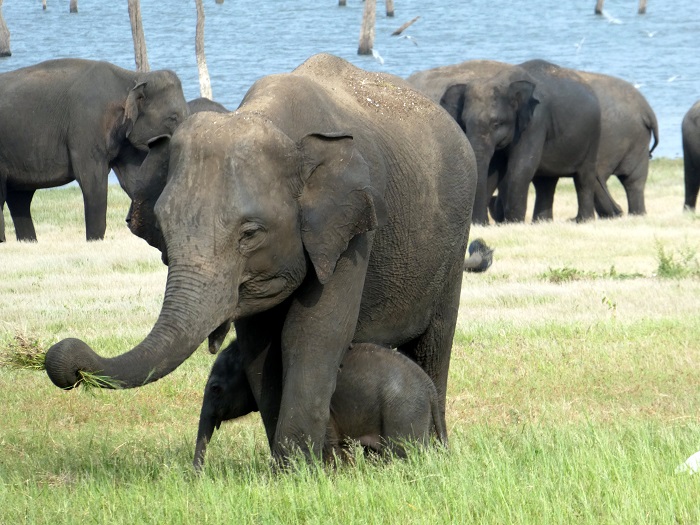
Today I want to talk about elephants. And I want to warn you that some of the photos featured are R rated due to the unusual mating session we witnessed on the game drive in which I participated a couple days ago. I don’t think we’ll be offering this game drive on the Jan 2019 tour simply because there were almost as many game jeeps on site as elephants. I think we’ll have a little less crowded opportunity to connect with Asian elephants coming up later.
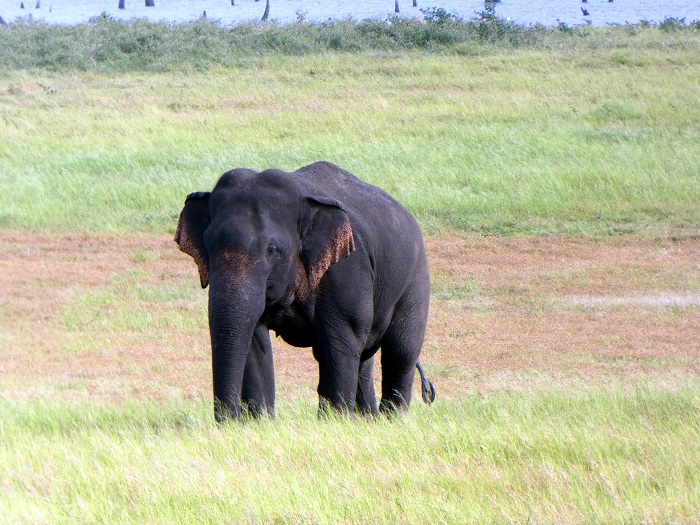
Nevertheless, it was a unique opportunity to be so close to these magnificent creatures! And we were able to witness some fun and intriguing behavior during the 30 to 45 minutes we watched them. Playfulness and sparring…perhaps some aggression among the young males…feeding on the rich grasses that draw the herd to this site…little ones crossing back and forth beneath their mothers legs… and of course, the unusual mating session.
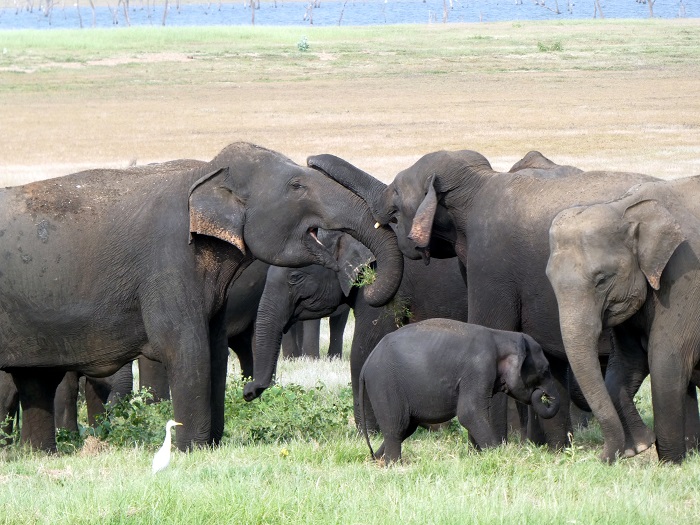
That was yesterday. Today I started with a new travel team with whom I’ll be working for the rest of the journey. Dilip is now my guide, and he and his colleague took me to a remote little farm on the edge of the jungle for lunch. The farmer, Diya, and his wife, Lila (diminutive forms of their much longer and more challenging Sinhalese names) prepared a delicious spread of their own produce — about 10 dishes, and all of it from their farm, excepting the meat dishes, chicken and fish.
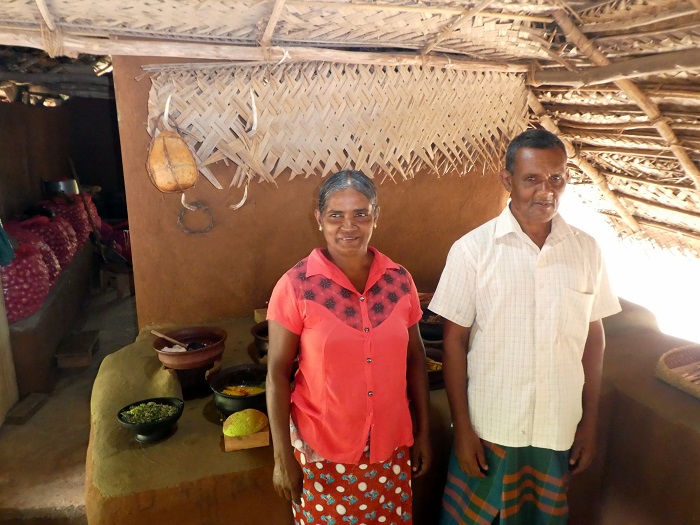
They were delightful hosts — gentle and humble and hospitable. Their little farm has been in the family for eons. Apparently, there is no title or deed to prove ownership, but farms like these have been owned by families like these forever. We don’t know how the ownership was initially established, but there is apparently no danger that it will be challenged. Dilip told me it will probably stay in the family until or unless there is a major shift in how people make a living in this part of Sri Lanka. Diya’s daughter lives next door with her husband and family. They work together at farming. Their son is mentally challenged and lives with them, helping with the farming. They have no retirement plan or social welfare system. They will work as long as their health holds out and will be taken care of by family when they can no longer work.
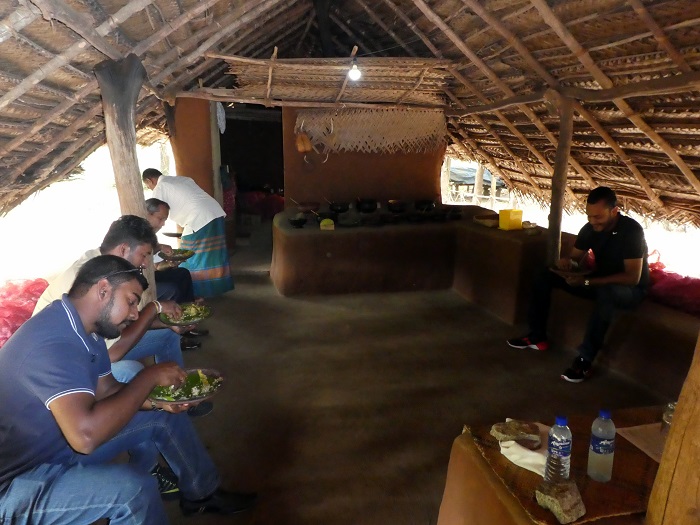
It was the best food I’ve yet had on the trip — we all lined up for seconds! Sashan (the manager of the supplier with whom we were working) is from the capital city of Colombo and told me that even he had never tasted these dishes — extremely local creations!
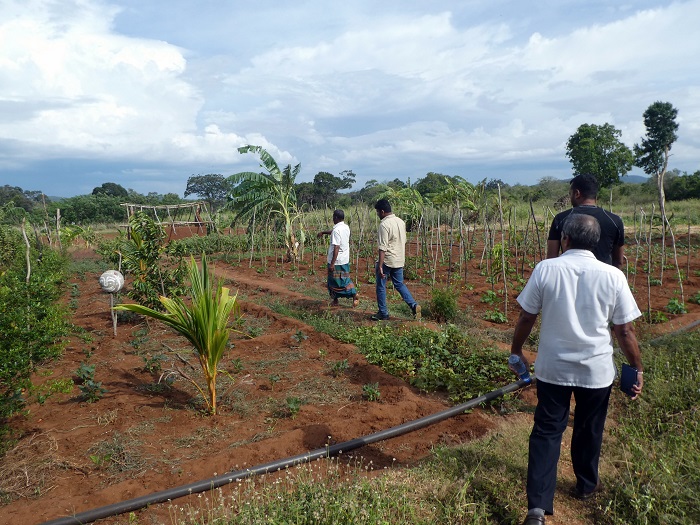
We also talked about elephants and farming. Until recently, Diya could go into the jungle and clear additional land and farm it, adding to his crop yield. His property directly abuts the jungle on at least two sides. But the government has now put an electric elephant fence in place to prevent the pachyderms from encroaching on the farms.
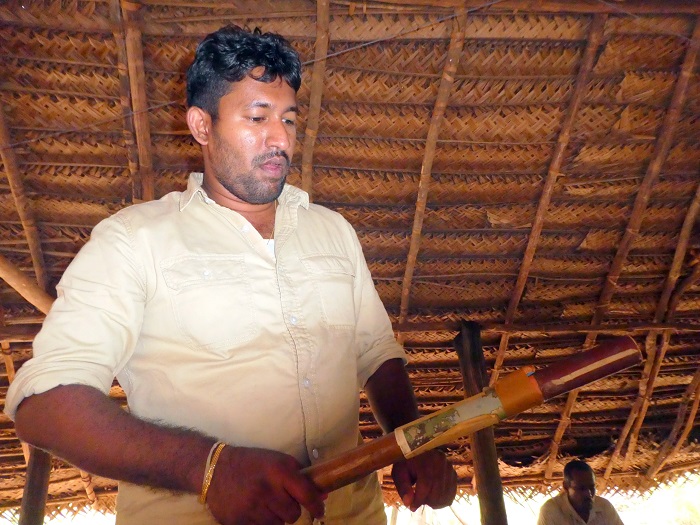
Elephants are extremely destructive in their feeding habits — “rip and tear” is an appropriate description of their feeding etiquette, and I’ve seen places in Africa that look like war zones where they’ve lived in large numbers. An animal this big and strong will destroy nearly anything in a quest for food.
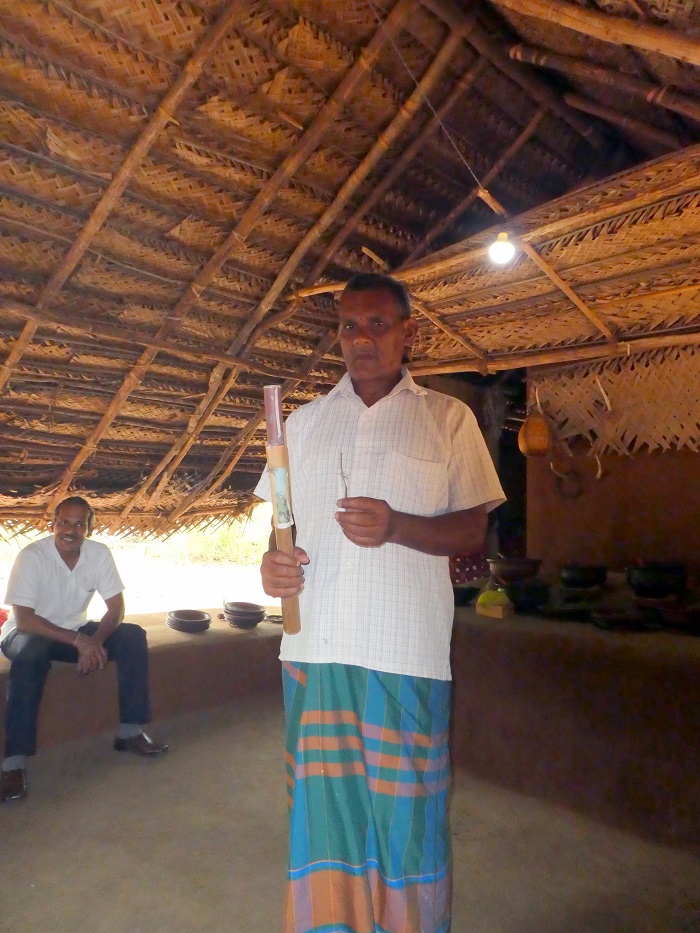
So now they have an electric fence that helps keep the big guys away. It is not completely effective however, so the fallback deterrent is “crackers”! Firecrackers. The government issues elephant firecrackers to the farmers and the farmers mount them on a throwing stick. They light a fuse and let them fly at the elephant.
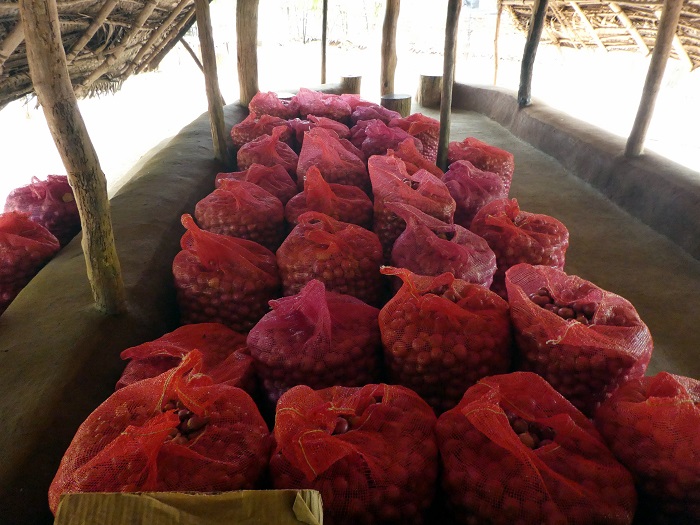
I asked if the ever-present dogs (more street dogs here than anywhere I’ve been, but more on that later) help to scare away the elephants. Answer: “No, the dogs are actually a liability because the elephants are not afraid of them and chase them. The dog then runs for cover into the house and guess where that leads the rampaging elephant?” So they actually discourage the dogs from helping them to keep critters out of the fields.
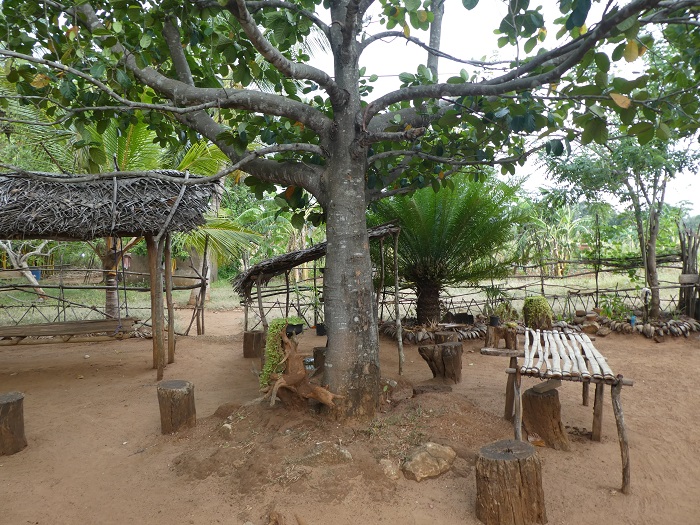
Smaller crackers are used to scare away wild pigs and, of all things…peacocks! Yes peacocks rank right up there with elephants in their propensity to destroy crops.
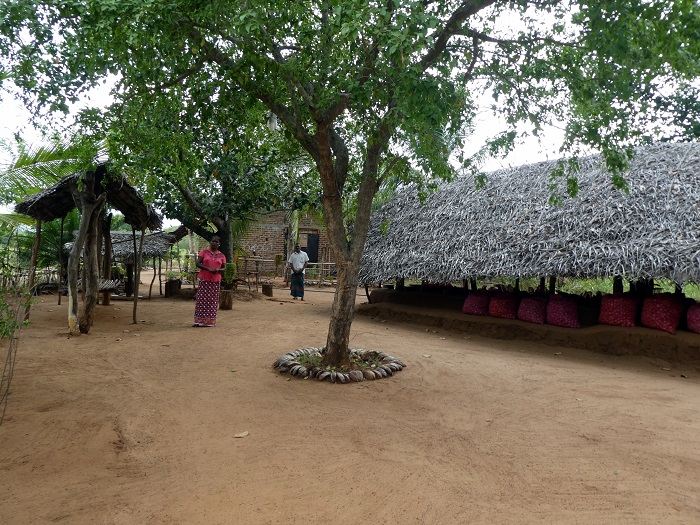
It was an enlightening lunch visit and I felt privileged to enjoy the warmth and genuine hospitality of this Sri Lankan couple. We plan to bring the group here in Jan 2019, possibly for a dinner visit. The bus can’t get back this deep into the forest so we’ll arrive on “land masters” — the local version of a tractor — pulling trailers loaded with walkers![/vc_column_text][/vc_column][/vc_row][vc_row][vc_column][vc_gallery interval=”3″ images=”10858,10864,10866,10868,10870,10872,10874,10867,10869,10873,10875,10876″ img_size=”large”][/vc_column][/vc_row]

